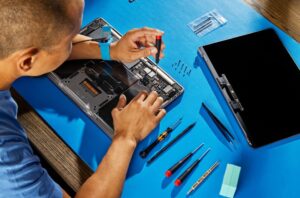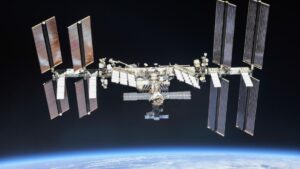How Sequoia changes virtualisation on Apple silicon
Virtualising macOS on Apple silicon Macs running Sonoma has been severely limited in several respects. The most critical has been the inability for virtual machines (VMs) to use an Apple ID, which has in turn prevented the use of almost all App Store apps, and blocked access to iCloud from the VM. This article explains the changes promised in macOS Sequoia as a host, and their consequences on VMs.
Apple ID
When running macOS 15 or later in a VM on a host running macOS 15 or later, VMs now support Apple ID and signing into iCloud. When you create a Sequoia VM on a Sequoia host, the VM is provided with an identity derived from the host’s Secure Enclave to enable that. That identity is specific to the host Mac and the user; if that VM is run on a different Mac or by another user, then macOS will automatically create a new identity, requiring the user to authenticate again. Reauthentication is also required if the VM is duplicated and run at the same time as the original. This ensures that each Sequoia VM has its own distinct identity derived from the required secrets in the host Secure Enclave.
To take advantage of this new feature, VMs have to be built from IPSW image files for macOS 15 or later. If you upgrade an existing VM built originally for Sonoma or earlier, Apple ID isn’t made available after upgrading. It also isn’t available in a Sequoia VM built on Sonoma or earlier.
Although this is an important enhancement, it still means that macOS VMs will be unable to run App Store apps, or anything else requiring Apple ID or iCloud access, that are incompatible with Sequoia, and that limitation is going to be permanent. Apple warns that those providing virtualisers should “let anyone using your virtualization-enabled app know that they need to migrate their data from older VMs to a macOS 15 or later VM”, but it’s hard to see that would affect many users, given that previous versions of macOS haven’t supported Apple ID or iCloud, and will never be able to.
USB Storage
In previous versions of macOS, VMs have been unable to access most storage except in the VM’s own disk image or through shared folders. With Sequoia they will now be able to access USB storage through the UUID of the storage device. This should provide direct access to external disks, and any other external storage connected to the host via USB.
USB devices
Sequoia VMs running on Sequoia hosts also have access to a wider range of USB devices, including USB controllers and USB XHCI controllers. These can again be added through the UUID of the device connected to the host. Apple doesn’t provide any indication of their likely performance or limitations.
macOS VM numbers
For those with Macs with Ultra chips and ample cores, there’s no indication that Apple has relaxed its licence to allow any more than two macOS VMs to be run at the same time.
Nested virtualisation
In previous versions of macOS, it hasn’t been possible to run a virtualiser within a VM, in nested virtualisation. Although this is now possible when the host Mac has an M3 chip or later, Apple’s documentation is unclear whether this applies to macOS VMs, as this capability is listed for Linux VMs rather than for macOS.
Sequoia beta VMs
For the last two release cycles, it has been possible to run the next macOS in beta as a VM, and that should be true for Sequoia betas too. For those wanting to test against betas of macOS 15 this can be an excellent compromise if a Mac can’t be set aside as a test platform.
To install and run a beta of Sequoia on a Sonoma host normally requires additional software, though. One way of accomplishing that is to download and install the current beta-release of Xcode 16; alternatively the additional software can be downloaded and installed automatically when you first try running a newly created Sequoia VM. Currently, the latter doesn’t work, as that update isn’t yet available. It may be provided through developer downloads, or when the first public beta of Sequoia is released. Please remember that, until Apple releases that public beta, Sequoia is only licensed to those with developer agreements with Apple, and not yet intended for the public.
Note that Apple ID won’t be available in any Sequoia VM running on Sonoma, and that you can’t use Apple ID in any macOS VM that has been upgraded to Sequoia.
I suspect that most virtualisers will need to be rebuilt to some degree before they can make full use of changes in Sequoia as host or guest. So far my current release of Viable appears fairly stable, although it won’t run a Sequoia VM built on Sequoia, on a Sonoma host, and doesn’t have Apple ID access yet. I have more work to do over the coming weeks.




